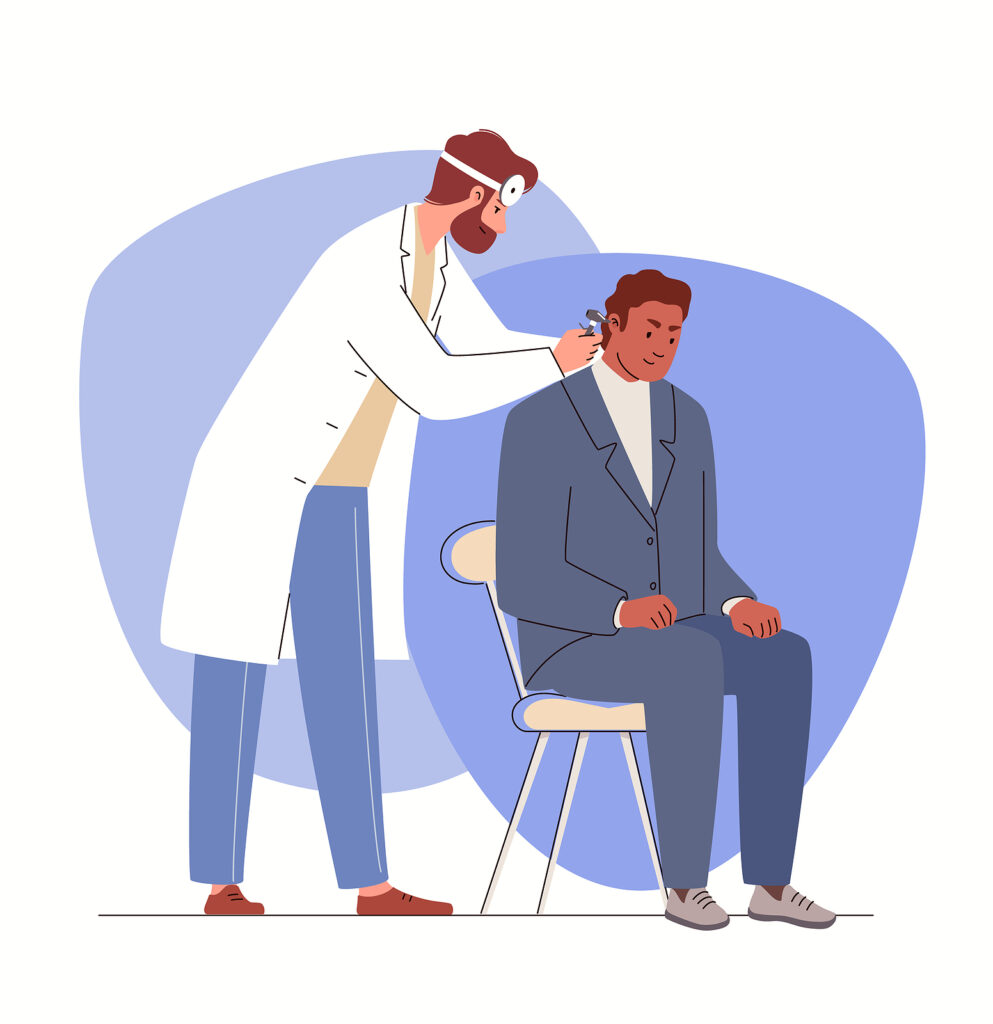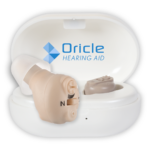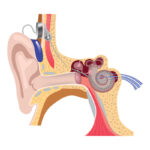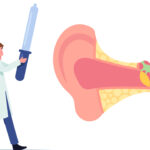How to Treat Transient or Mild Conductive Hearing Loss
If you've been experiencing transient or mild conductive hearing loss, you've probably wondered how to treat it. In this article, you'll learn about the causes and treatments for this condition. Despite its name, conductive hearing loss is a common problem. If you have any of these symptoms, you should seek medical attention right away. Your doctor can prescribe therapy or an assistive device based on your symptoms.
Treatments for mild conductive hearing loss

There are several treatment options for mild conductive hearing loss. The most common cause of this condition is a chronic ear infection, which causes fluid to accumulate behind the eardrum or in the middle ear space. Treatments for this condition can include taking medication to clear the infection and monitoring the patient's condition. If the condition doesn't respond to these methods, a doctor may suggest surgery to remove middle ear bones.
In the mild conductive hearing loss, an external or middle ear bone is damaged or blocked. In addition, fluid may build up in the space between the eardrum and the cochlea. The resulting deafness can range from temporary to permanent. Fortunately, most cases of conductive hearing loss are treatable. However, it is important to seek medical attention as soon as you suspect you may be suffering from this condition.
Medical treatments for mild conductive hearing loss may include medication or surgery. If medical treatment is ineffective, hearing healthcare professionals may seek other treatment options, including surgical interventions. These include a bone-anchored hearing system or cochlear implant. Although these options are expensive, they are proven to improve the quality of life for a person with conductive hearing loss. However, they do not cure the condition. You may need to take additional medication to address this condition.
A surgical procedure can help restore hearing in people with mild conductive hearing loss. This involves inserting a small tube through the eardrum. This surgery is usually performed on children and adults who suffer from chronic middle ear infections and fluid. It can restore hearing and heal inflammation in the middle ear. A surgical procedure can also replace the missing bones with prosthetic devices. This treatment is not suitable for severe conductive hearing loss, but it can help improve the quality of life for people with the condition.
Physical examinations are important for determining the cause of hearing loss. Infants and toddlers are routinely screened for hearing loss at regular intervals until they reach the age of 10 years. Nevertheless, if the child has noticeable symptoms of hearing loss, frequent screenings may be necessary. A comprehensive audiogram is necessary to rule out other possible causes. In children, speech delay is one of the most common symptoms of hearing loss.
Surgery to clear middle ear fluid is another common treatment for mild conductive hearing loss. Infections in the middle ear may also result in temporary hearing loss. A surgeon may insert a ventilating tube into the middle ear. This surgery usually takes 15 minutes and requires general anesthesia. In children, it is important to note that there is a chance that the fluid may come back. If this is the case, the clinician may recommend antibiotics to clear the fluid in the middle ear.
Causes of conductive hearing loss

In patients with conductive hearing loss, the problem is associated with an impairment of sound transmission to the inner ear. Pathologies in the external auditory canal, tympanic membrane, or ossicular chain can lead to impaired function of the inner ear. A fluid medium in the membranous labyrinth leads to inefficient conversion of sound waves. The dehiscent superior semicircular canal, or “third mobile window” of the inner ear, can also cause this problem. Furthermore, patients with conductive hearing loss often exhibit a negative Rinne test, meaning that bone conduction is more effective than air conduction in the tested ear.
Surgical intervention is necessary if you suspect conductive hearing loss, but it is not a prerequisite to a diagnosis of otosclerosis. Congenital middle ear abnormalities such as congenital acoustic neuroma, lateral fixation of the ossicular chain, and tympanosclerosis can also cause conductive hearing loss. Because conductive hearing loss can occur in both ears, it is crucial to find a qualified otoscopy surgeon to correct the condition.
Another common cause of conductive hearing loss is impacted cerumen in the external canal. This condition is harmless and is most likely to be noticed after bathing or swimming. Water can also cause the passageway to close. Other causes include otitis media, which can be infective. Chronic otitis media may result in the invasion of the tympanic membrane. Another possible cause of conductive hearing loss is cholesteatoma, which causes the erosion of the ossicles and bony labyrinth. Some people are unable to hear at all, while others may experience a mixed conductive and sensorineural hearing loss.
During a lifetime, one might experience mild conductive hearing loss. It is a gradual process and is not permanent. There are many causes of conductive hearing loss, including earwax buildup, infection, and trauma to the ear. If you experience one of these conditions, you should seek medical help as soon as possible. If the problem is serious, it may be due to a combination of causes.
If you suspect a foreign object is affecting your child's hearing, you should consult a physician. A medical professional can remove the foreign object, and will also examine the ear. If you suspect that your child has an ear infection, try to avoid pushing the foreign object further into the ear. Some medications, such as antibiotics, can treat recurring episodes of conductive hearing loss. In some cases, ear tubes can be implanted to drain fluid from the middle ear and reduce the risk of further ear infections.
Other causes of conductive hearing loss may be structural, or even caused by a foreign object. During a physical examination, the physician should look for any physical abnormalities, such as a hole or blockage in the external auditory canal. If the cause is not present, the doctor may use the Rinne hearing test to differentiate between bone and air conduction. In this test, the audiologists measure the level of hearing in each ear.
Treatments for transient conductive hearing loss
Most cases of conductive hearing loss are temporary and reversible, including infections and earwax buildup. Some causes are more severe, such as a swimmer's ear, which is the result of a sudden altitude change or ear infection. Other causes include a damaged eardrum or eustachian tube, or abnormal growths in the middle ear. Treatments for transient conductive hearing loss include medications, surgery, and earwax removal.
The best treatment for conductive hearing loss depends on the underlying cause. Some conductive hearing losses can be corrected by turning up the volume of loud noises or by removing the earwax. Other treatments may involve antibiotics and pressure-equalizing tubes. You may be able to manage your symptoms by increasing the volume of your music or TV. Changing the volume in your listening environment may help to improve your hearing, but it may be only temporary.
Certain treatments for conductive hearing loss are not effective at restoring hearing. For example, water can lead to the development of tympanic effusion and lead to impaction of the wax. For those who do not respond to medication, surgery may be recommended. A doctor may prescribe a combination of drugs. In some cases, an ear canal operation may be necessary to restore hearing. However, it is not a cure for conductive hearing loss, and long-term treatment is more effective than a quick and temporary solution.
Although most cases of conductive hearing loss are temporary and curable, some of the most effective treatments are not. In general, hearing aids may be more helpful for patients with sensorineural hearing loss. These types of hearing loss are caused by damage to the inner ear and hearing nerves. In either case, the body's ability to process sound signals is impaired, making it impossible for it to function normally.
Sources
American Academy of Otolaryngology-Head and Neck Surgery. Conductive hearing loss. Retrieved from https://www.enthealth.org/conditions/conductive-hearing-loss/
WebMD. Conductive hearing loss: Symptoms, causes, and treatment. Retrieved from https://www.webmd.com/cold-and-flu/ear-infection/conductive-hearing-loss







